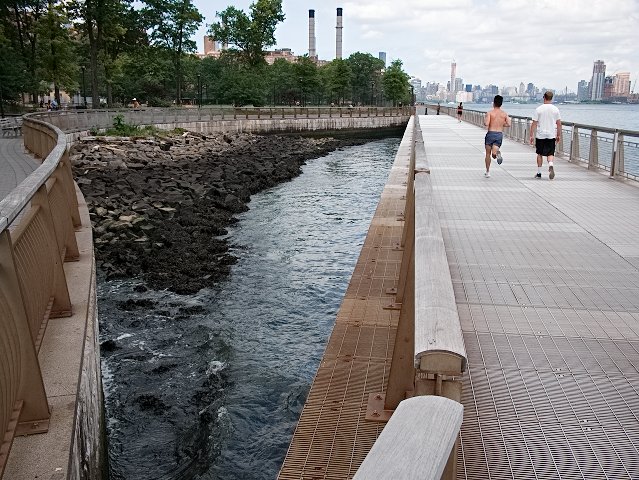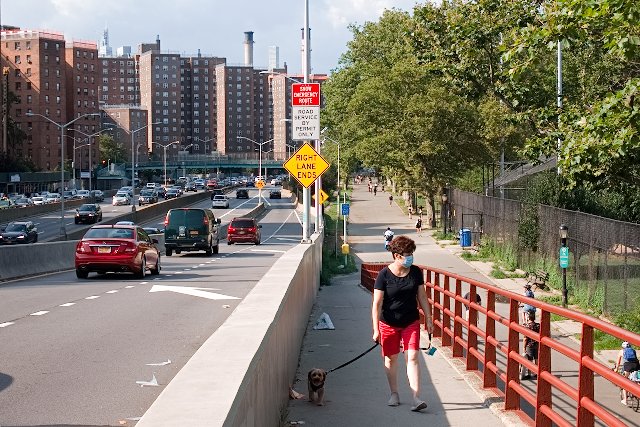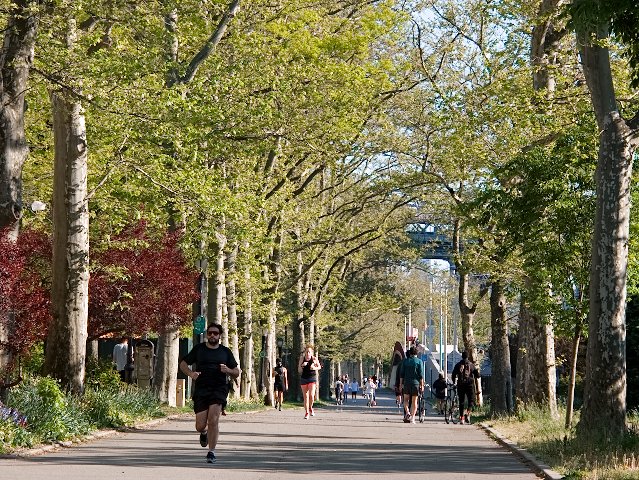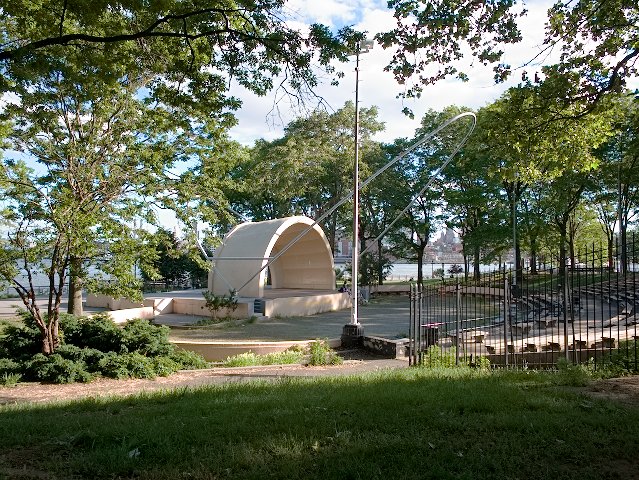 one of 2 coves along the esplanade, East River Park ©Lauren Helf
one of 2 coves along the esplanade, East River Park ©Lauren Helf
July 31, 2020
Part II: The Fall of East River Park
The park with the largest green space for recreation and relaxation in Lower Manhattan is going to be bulldozed come
this fall. Losing East River Park would be bad enough in normal times; the pandemic makes it even more critically alarming. But,
the devastation of Hurricane Sandy in October 2012 made clear that climate change is affecting New York City and something must be done.
And so, even after all the multi-million dollar upgrades this park has received since its establishment in 1939, it has been slated
for destruction and a $1.45 billion rebuild 8-feet higher in an attempt to ward off storm surge and flooding in this part
of the city.
This is just one piece of a multi-part city-wide effort to mitigate against sea level rise.


 park entrances and bikeway at the edge of the highway ©Lauren Helf
park entrances and bikeway at the edge of the highway ©Lauren Helf
It wasn't always going to be this way.
With the participation of residents and groups in the community, agencies from the city, state, and federal government went
through a 4-year process of choosing, approving, and funding $760 million for a flood mitigation plan in which most of the existing
park was preserved. But in September 2018, the mayor suddenly announced a very different new design, the one that destroys the
park before elevating it and rebuilding.
Taken unawares, elected officials and community members charged the city with lack of transparency. Because certain information and documents have not been
made public, an expert consultant, Deltares, could not confirm either efficacy for flood protection or the duration of the
projected 3.5 year construction period. The neighborhood will remain vulnerable to flooding until the project is
completed.
Because of community protest, a concession was made to alleviate the hardship of losing the park: the work will be done in phases,
leaving parts accessible during construction. But air quality and noise levels could impinge on the health and well-being of
visitors to the open, limited areas.
 amphitheater ©Lauren Helf
amphitheater ©Lauren Helf
 plaza ©Lauren Helf
plaza ©Lauren Helf
 nature habitat ©Lauren Helf
nature habitat ©Lauren Helf
Having first caused global warming, we are now forced to try to stave off its ravages. It's a terrible and possibly futile situation
to be in, but try we must.
Both plans for the park have flaws and neither is ultimately a real win. Regarding 1000 or so full-grown
trees and wildlife, the first plan would leave everything at risk in the saltwater floodplain; the second plan rips all the life out,
and also could adversely affect two endangered sturgeon species. Migratory birds and beneficial insects like bees and butterflies
will be disrupted or destroyed.
It's distressing. Although impermanence is a feature of both natural as well as city life, all this loss feels like a step too far.
I deeply regret the fate of East River Park.
 irreplaceable tree, East River Park, 1939 - 2020? ©Lauren Helf
irreplaceable tree, East River Park, 1939 - 2020? ©Lauren Helf









